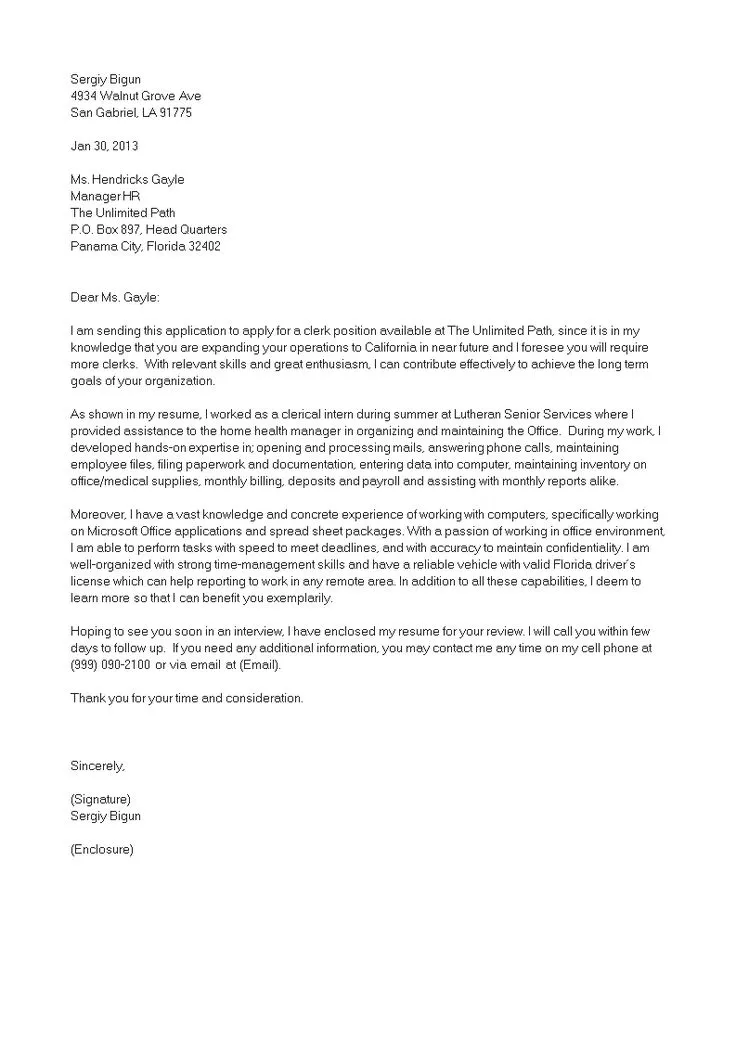Understanding the Importance of a Cover Letter
In the competitive landscape of entry-level job applications, a well-crafted cover letter can be your most powerful tool. It’s not just a formality; it’s your first chance to make a strong impression and demonstrate why you’re the right fit for the role. While your resume provides a snapshot of your skills and experience, the cover letter offers an opportunity to tell your story, showcase your personality, and articulate your enthusiasm for the position and the company. It bridges the gap between your qualifications and the employer’s needs, giving you an edge over candidates who might rely solely on their resumes. Think of it as a personalized introduction that sets the stage for your application, highlighting your unique value proposition and making a compelling case for why you deserve an interview. A strong cover letter can significantly increase your chances of landing an interview, while a weak one can lead to your application being overlooked, regardless of your qualifications.
Why Cover Letters Matter for Entry-Level Roles
For entry-level positions, where experience may be limited, a cover letter is even more critical. It allows you to emphasize transferable skills, demonstrate your eagerness to learn, and explain how your academic background or extracurricular activities have prepared you for the role. Recruiters often use cover letters to assess a candidate’s communication skills, attention to detail, and cultural fit within the company. By effectively communicating your passion, skills, and career aspirations, you can stand out from the crowd and show employers that you’re serious about the opportunity. Cover letters provide a platform to address any potential gaps in your experience, such as a lack of direct industry experience, by highlighting relevant coursework, projects, or volunteer work. They also show initiative and a willingness to go the extra mile, which are highly valued qualities in entry-level candidates. Showing genuine interest in the company and the role will make you a stronger candidate.
Key Components of a Winning Cover Letter
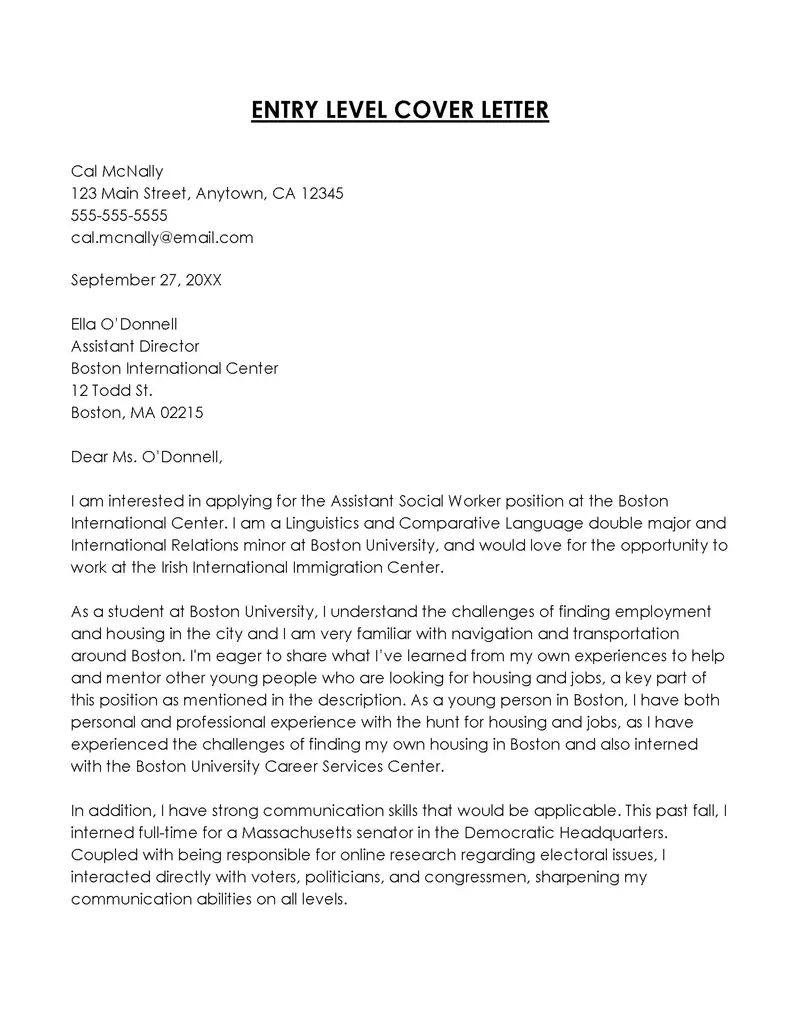
A winning cover letter is structured, clear, and concise, making it easy for the hiring manager to quickly grasp your key qualifications and interest. The key components work together to create a compelling narrative. Begin with a professional header that includes your contact information. Then, address the hiring manager directly whenever possible, which shows you’ve done your research and are invested in the position. The opening paragraph should immediately grab the reader’s attention, stating your enthusiasm for the role and the company. In the body of the letter, highlight your relevant skills and experiences, emphasizing transferable skills and quantifying your achievements whenever possible. Always tailor the content to the specific job description, ensuring your letter addresses the key requirements outlined by the employer. The closing paragraph should express your gratitude and include a clear call to action, inviting the employer to contact you for an interview. Always proofread your cover letter to avoid grammatical errors and ensure it’s free of typos.
Header Section Contact Information
The header of your cover letter should be the first thing the hiring manager sees. It needs to be clear, professional, and easy to read. Start with your full name, and follow this with your contact information, including your phone number and professional email address. Ensure your email address sounds professional; avoid using nicknames or informal addresses. You should also include a link to your LinkedIn profile, if you have one. Place this section at the top left or center of the page. This allows the employer to quickly contact you and assess your application more efficiently. Keeping the information readily available helps the hiring manager or recruiter easily find your contact details. Accuracy is key; double-check all the information to avoid mistakes. Be sure to use a clear and readable font to ensure it’s easy to read. Avoid any unnecessary formatting or colors to keep it professional.
Applicant’s Name and Contact Details
Your name and contact details form the foundation of your cover letter header, ensuring that the hiring manager knows who you are and how to reach you. Start with your full legal name, as this establishes a professional identity. Below your name, include your phone number, a current and reliable way for recruiters to contact you for interviews or updates. It is important to use a professional email address that includes your name and is easily identifiable. This is preferable to nicknames or informal email addresses. If you maintain a LinkedIn profile, include the URL. This allows recruiters to quickly access your professional online presence. By presenting this information clearly and concisely, you make it easy for employers to connect with you and express your interest in the position. Always ensure this information is accurate and up-to-date to avoid any communication delays.
Date of Application
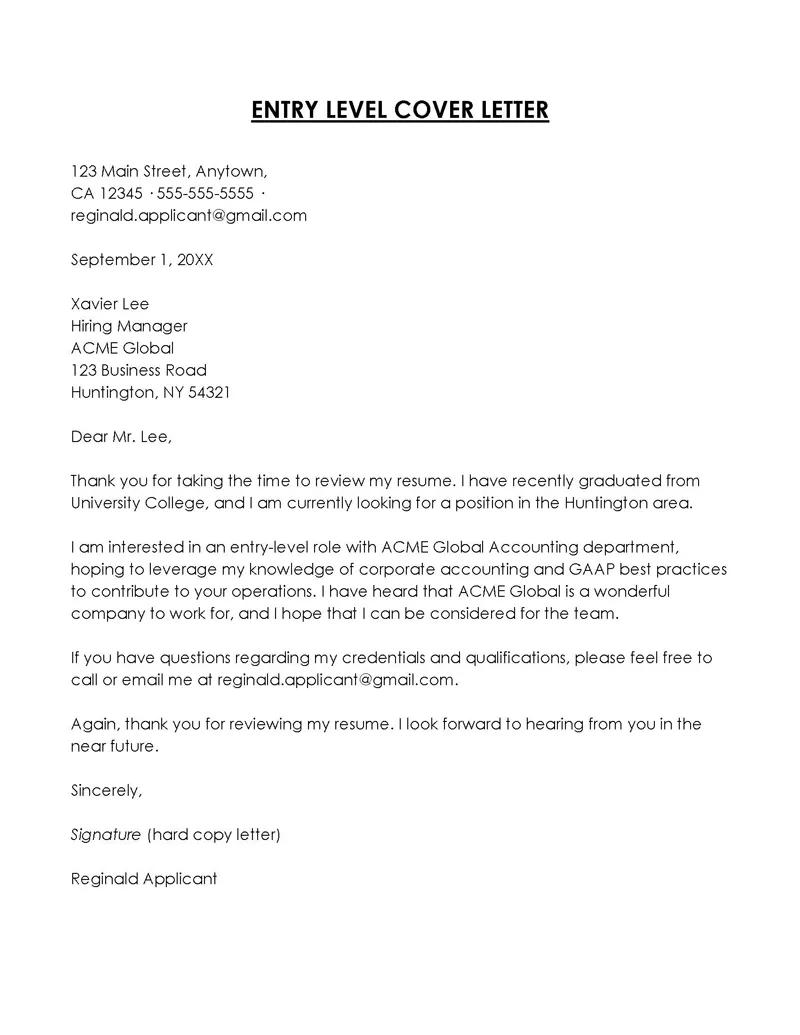
Including the date of your application is a standard practice that provides context for the recipient. Place the current date directly below your contact information and before the recipient’s details. This helps the hiring manager track when the application was submitted, especially if they are reviewing multiple applications over time. The date helps in organizing records and provides a timestamp that may be useful for internal processes. Formatting should match the rest of the letter, and the date should be in a standard format (e.g., Month, Day, Year) for clarity. Ensure the date is correct before sending; this attention to detail demonstrates your professionalism and organization, qualities that are highly valued in entry-level candidates.
Recipient’s Information
Addressing your cover letter to the specific hiring manager, if possible, is an excellent way to demonstrate your initiative and attention to detail. Begin by researching the name of the person responsible for hiring for the role. This can often be found on the job posting, on the company website, or through LinkedIn. If you cannot find a specific name, use a professional greeting such as “Dear Hiring Manager.” Include the hiring manager’s title (e.g., Recruiter, Hiring Manager, or Department Head) and the company’s name. This personalization shows you’ve taken the time to learn about the company and the role. It also makes your application stand out. If you’re unsure, erring on the side of formality with a broader title is generally safe. Address the letter clearly and accurately to maintain a professional tone.
Greeting the Hiring Manager
The greeting sets the tone for the entire cover letter. Addressing the hiring manager by name is ideal, as it immediately grabs their attention and shows you’ve done your research. Using “Dear Mr./Ms./Mx. [Last Name]” is appropriate for most business settings. If you are unable to find the name of the hiring manager, a professional alternative is “Dear Hiring Manager.” Avoid generic greetings such as “To Whom It May Concern.” It makes your application seem less personalized. Ensure you spell the hiring manager’s name correctly. If in doubt, double-check the company website or LinkedIn profile. The opening greeting should be professional, respectful, and engaging. This creates a positive first impression and encourages the reader to continue reading your letter.
Crafting a Compelling Opening Paragraph

The opening paragraph is your chance to make a strong first impression and capture the hiring manager’s attention. Begin by stating the specific position you are applying for and where you saw the job posting. Clearly express your enthusiasm for the opportunity and the company. Briefly mention why you’re interested in this particular role and what makes you a good fit. Don’t just rehash your resume; instead, use this paragraph to show your personality and enthusiasm. You can include a brief, relevant anecdote or a statement that highlights your understanding of the company’s mission or values. Keeping it concise and engaging helps keep the reader hooked. The goal is to make the hiring manager want to read more about you.
Highlighting Your Enthusiasm and Skills
Throughout the body of your cover letter, you must highlight your skills and enthusiasm. Instead of simply listing your qualifications, demonstrate how your skills align with the job requirements. Provide specific examples from your coursework, projects, volunteer work, or previous employment. This gives the hiring manager concrete evidence of your abilities. Explain why you’re passionate about the position and the company’s mission. Show that you’ve done your research and understand what the role entails. Use strong action verbs to describe your accomplishments and skills. Quantify your achievements whenever possible to make them more impactful. This shows you have not only the skills but also the ability to deliver results. Being enthusiastic and showing you have researched the company shows the recruiter your interest.
Demonstrating Relevant Skills and Experience
When showcasing your skills and experience, focus on what is relevant to the specific job you’re applying for. Carefully review the job description and identify the key skills and qualifications the employer is seeking. Tailor your cover letter to address these requirements directly. Provide specific examples of how you’ve utilized those skills in the past. This could be through projects, coursework, or extracurricular activities. Use the STAR method (Situation, Task, Action, Result) to describe your experiences in detail. This helps the hiring manager understand your role and the impact of your work. Quantify your achievements whenever possible to demonstrate the positive outcomes of your actions. This targeted approach shows the hiring manager that you possess the skills necessary to excel in the role.
Showcasing Transferable Skills
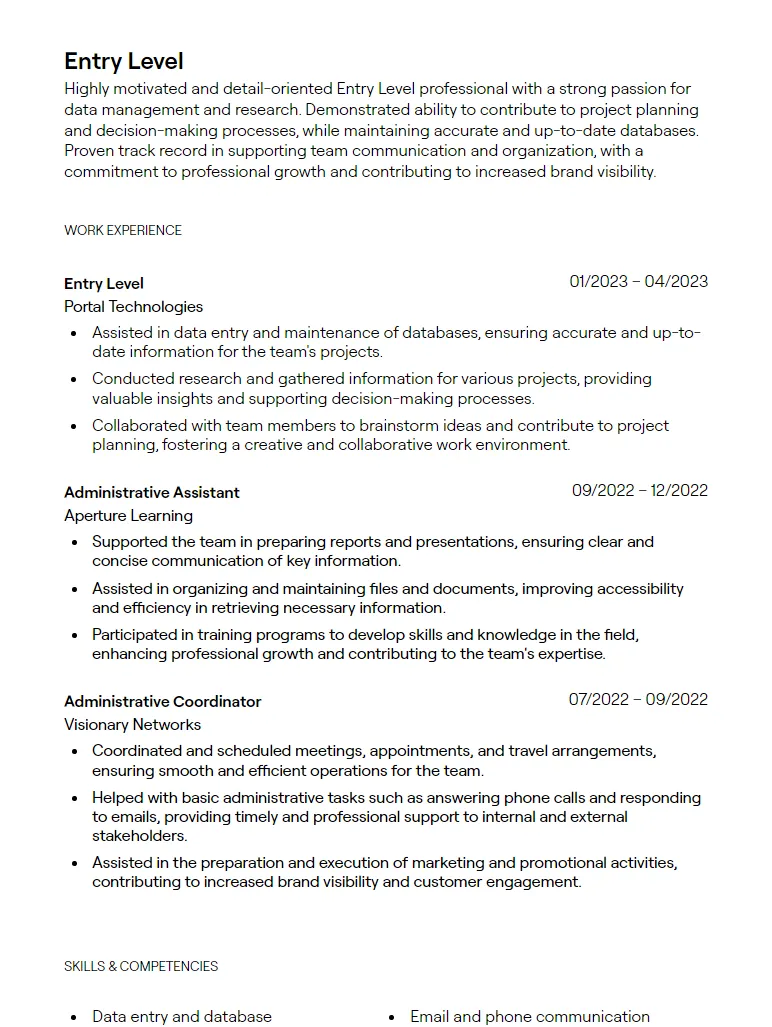
For entry-level candidates, it’s crucial to highlight transferable skills. These are skills you’ve gained in one context, like education or volunteer work, that can be applied to a new job. Examples include communication, teamwork, problem-solving, time management, and leadership. Identify these skills in your resume and provide examples of how you’ve used them. When describing these examples, emphasize the positive results. Tailor your examples to the job description, showing how your transferable skills align with the company’s needs. Focus on skills that are most relevant to the role and use action verbs to demonstrate your abilities. This can set you apart from other candidates, especially when direct experience may be limited. Highlighting these transferable skills makes it easier for employers to see your potential.
Mentioning Relevant Projects or Coursework
If you have limited work experience, mentioning relevant projects and coursework can significantly strengthen your cover letter. Include details about any projects you’ve completed that relate to the job. Describe your role, the skills you used, and the outcome of the project. Summarize relevant coursework that has prepared you for the position. Mention specific skills or knowledge you gained from these courses. Explain how your projects and coursework have equipped you with the skills and knowledge necessary for the job. Quantify your achievements whenever possible, like improving a project outcome or excelling in a particular area of study. This can help to show you have the skills that the company is looking for. Presenting this information effectively shows your commitment to the field.
Quantifying Your Achievements
Whenever possible, quantify your achievements to demonstrate the impact of your skills and experiences. Instead of saying, “I improved customer service,” state, “I improved customer satisfaction scores by 15%.” Use numbers, percentages, and specific data to illustrate your accomplishments. These metrics provide concrete evidence of your abilities and make your achievements more compelling. If you led a team, mention the number of people you managed and any successes you achieved together. If you completed a project, include the results or any positive outcomes you achieved. This detailed, data-driven approach makes your cover letter more persuasive and memorable. Specific examples allow the hiring manager to easily understand your impact.
Tailoring Your Cover Letter to the Job Description
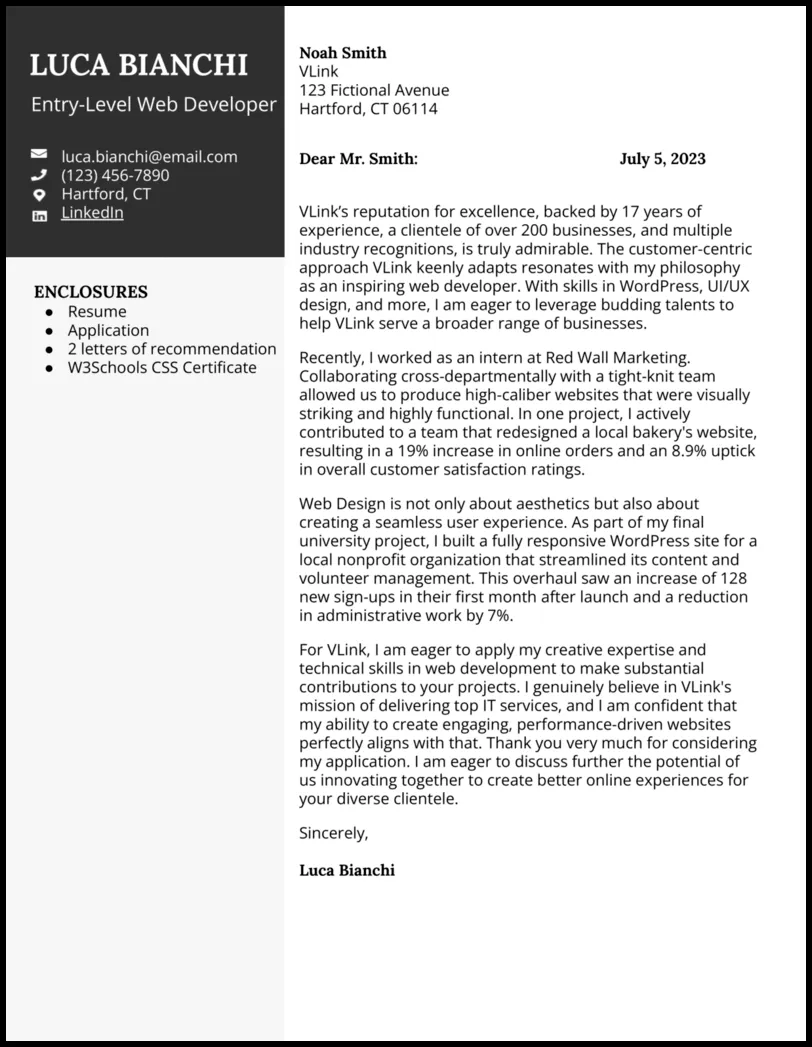
Tailoring your cover letter to each job description is crucial for demonstrating your genuine interest and suitability for the role. Begin by carefully reviewing the job description, noting the key requirements, skills, and qualifications. Customize your cover letter to address these specific needs directly. Use keywords from the job description throughout your letter. This helps your application get noticed by applicant tracking systems (ATS) and highlights your relevant experience. Provide examples of how your skills and experience align with the job requirements. Show that you understand the company’s needs and how you can contribute to their success. Avoid using a generic cover letter; personalize it to reflect your understanding of the role and the company. This level of detail shows you’re proactive, which is attractive to employers.
Analyzing the Job Requirements
Before you start writing, carefully analyze the job requirements. Read the job description thoroughly, highlighting the key skills, experiences, and qualifications the employer is seeking. Break down the requirements into categories, such as technical skills, soft skills, and experience levels. Determine how your skills and experience align with each requirement. Make a list of examples from your past that demonstrate these skills and qualifications. This will provide a framework for your cover letter. This proactive analysis helps you prioritize the most relevant information and effectively showcase your value to the employer. Understanding the requirements before you write ensures that your cover letter is targeted and persuasive, increasing your chances of success.
Matching Your Skills to the Job Needs
Once you’ve analyzed the job requirements, match your skills and experiences to the specific needs of the role. Use the keywords from the job description in your cover letter. Provide specific examples of how you’ve used these skills in the past. Quantify your achievements to demonstrate the impact of your skills. Explain how your skills and experience will benefit the company. This targeted approach shows the hiring manager that you understand the job and are prepared to excel. Use strong action verbs to describe your accomplishments and demonstrate the impact of your actions. By clearly connecting your skills to the job’s needs, you make a compelling case for your candidacy, showing you have the skills to excel.
Closing Your Cover Letter Effectively
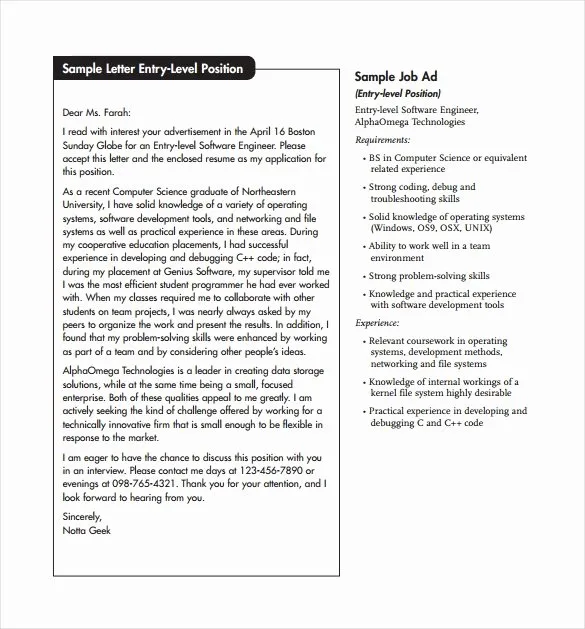
The closing paragraph is your final chance to leave a positive impression on the hiring manager. Express your gratitude for their time and consideration. Reiterate your interest in the position and the company. Include a call to action, such as inviting the hiring manager to contact you for an interview. Provide your contact information again for ease of reference. Keep the closing concise and professional. Ensure your tone is enthusiastic and confident, leaving the reader with a positive impression. This encourages the hiring manager to take the next step and contact you.
Expressing Gratitude and a Call to Action
Expressing gratitude is a vital part of the closing of your cover letter, showing courtesy and professionalism. Thank the hiring manager for taking the time to review your application. Acknowledge their consideration for your application. Then, include a clear call to action, inviting the hiring manager to contact you for an interview. State your availability and eagerness to discuss your qualifications further. Make it easy for them to take the next step by providing your contact information once more. Ending with gratitude and a clear call to action leaves the reader with a positive impression and encourages them to move forward with your application.
Proofreading and Formatting
Proofreading and formatting your cover letter is critical to ensure it is professional and polished. Before sending, meticulously review your cover letter for any typos, grammatical errors, or formatting inconsistencies. Use a clear and readable font, such as Arial or Times New Roman, and maintain consistent formatting throughout. Pay close attention to spacing, alignment, and margins. Have someone else proofread your cover letter to catch any errors you may have missed. A well-formatted and error-free cover letter demonstrates your attention to detail and commitment to quality. This will boost your credibility and increase your chances of making a positive impression on the hiring manager.
Formatting Guidelines
Following proper formatting guidelines is essential to make your cover letter easy to read and visually appealing. Use a standard font, such as Arial or Times New Roman, in a size between 10 and 12 points. Keep the font consistent throughout the document. Set your margins to one inch on all sides. Use single spacing for the body of your letter and double spacing between paragraphs. Align your text to the left, leaving the right margin ragged. Avoid using excessive formatting, such as bolding or underlining, unless it’s for headings or key information. Use clear headings and subheadings to break up the content and make it easy to scan. A clean and well-formatted cover letter is more likely to be read and appreciated by the hiring manager.
Proofreading Checklist
A thorough proofreading checklist helps you ensure your cover letter is free of errors. Check for spelling errors, grammar mistakes, and punctuation issues. Verify that all names, dates, and contact information are accurate. Ensure the formatting is consistent throughout the document. Review the overall tone and make sure it is professional and appropriate. Confirm that your cover letter addresses the specific job requirements and highlights your relevant skills. Ask a friend, family member, or career advisor to review your cover letter. This external perspective can help you catch errors you might have missed. By using a checklist, you ensure your cover letter is polished and professional, increasing your chances of making a good impression.
Entry-Level Cover Letter Examples
Reviewing examples of entry-level cover letters can provide valuable guidance and inspiration. Look for examples that align with your field of interest and the types of roles you’re applying for. Pay attention to how the candidates highlight their skills, experience, and enthusiasm. Analyze the structure and content of each example to learn how to craft a compelling cover letter. Tailor the examples to fit your unique background and the specific job you are applying for. Use the examples as a starting point, but always customize your cover letter to make it your own. By studying examples, you’ll gain insights into effective strategies and enhance your ability to create a strong cover letter.
Example 1 Cover Letter
Include a basic example. The example needs to include contact details, a greeting, the body, and a closing statement. This example could be used as a template, making it easy to customize and use for a job application. This allows the user to understand what a well-written cover letter looks like, and gives them something to model the cover letter on. Always tailor the examples to the specific job and your particular situation. The focus will be on the different sections to give the user something that helps to showcase their skills. Adapt the example to fit the job, always keeping in mind the tone of the company and the job. An example will show what a good cover letter should look like to the user.
Example 2 Cover Letter
Add another example of an entry-level cover letter, this one with a slightly different tone or structure, to showcase more variation. Use this second example to highlight a different approach. The purpose is to showcase the variety of cover letters. The examples serve as a learning tool and demonstrate effective communication strategies. The user can adapt these examples to their specific situation. This shows different approaches and allows the user to model their cover letter based on what’s best for them. Encourage users to personalize the provided templates to match their experiences and the requirements of the job. The goal is to help users create a personalized and effective cover letter.
